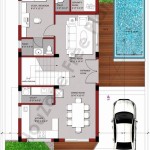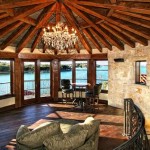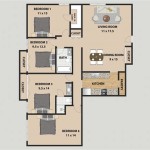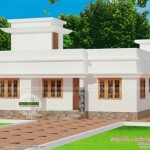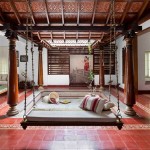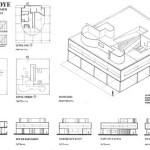```html
Contemporary Timber Frame Home Plans: A Fusion of Tradition and Modernity
Contemporary timber frame home plans represent a compelling synthesis of historical construction techniques and modern architectural design. This approach to building leverages the inherent strength and aesthetic appeal of timber framing while incorporating modern amenities, energy efficiency, and contemporary design principles. The result is a dwelling that is both structurally sound and visually striking, appealing to homeowners who appreciate the beauty of natural materials and the functionality of modern living spaces.
Timber framing, a construction method dating back centuries, involves creating a skeletal framework of heavy timbers joined together with mortise and tenon joints, pegs, and other traditional joinery techniques. This framework provides the primary structural support for the building, allowing for open floor plans and expansive windows. Contemporary applications of timber framing often combine this traditional approach with modern materials like structural insulated panels (SIPs) and high-performance glazing to enhance energy efficiency and create comfortable living environments.
The integration of contemporary design elements into timber frame homes allows for a wide range of architectural styles, from minimalist and modern to rustic and traditional. The exposed timber frame can be a focal point of the interior design, adding warmth and character to the space. The flexibility of timber frame construction allows for customization of floor plans, window placement, and overall design to suit the specific needs and preferences of the homeowner.
Key Point 1: Design Flexibility and Customization
One of the primary advantages of contemporary timber frame home plans is the unparalleled design flexibility they offer. Unlike conventional stick-built construction, timber frame's inherent structural integrity allows for larger open spaces and fewer interior load-bearing walls. This empowers architects and homeowners to create truly unique and personalized living environments.
The long spans achievable with timber framing allow for the elimination of interior columns and walls, creating expansive great rooms, open kitchens, and flowing living spaces. This is particularly desirable in contemporary home designs, where open-concept layouts are often favored. The exposed timbers themselves become a design element, adding visual interest and warmth to the interior.
Furthermore, contemporary timber frame plans can be adapted to a wide variety of architectural styles. While often associated with rustic or farmhouse-style homes, timber framing can also be incorporated into modern, minimalist, and even contemporary designs. The key is to carefully consider the design details and material palette to achieve the desired aesthetic. For instance, a timber frame home with clean lines, large expanses of glass, and a minimalist interior can create a striking contemporary residence.
Customization options extend beyond the floor plan and architectural style. Homeowners can choose the type of timber used, the joinery techniques employed, and the finish applied to the wood. They can also customize the placement and size of windows and doors to maximize natural light and views. This level of customization ensures that the finished home reflects the individual tastes and lifestyle of the homeowner.
The use of computer-aided design (CAD) and computer-aided manufacturing (CAM) technologies further enhances the design flexibility of timber frame construction. These technologies allow architects and engineers to create complex and intricate designs with greater precision and efficiency. They also enable the prefabrication of timber frame components in a controlled environment, reducing construction time and minimizing waste.
Key Point 2: Energy Efficiency and Sustainability
Contemporary timber frame home plans often prioritize energy efficiency and sustainability. While traditional timber frame construction may not always be inherently energy-efficient, modern building techniques and materials can be integrated to create highly sustainable and energy-efficient homes.
A key component of energy-efficient timber frame construction is the use of structural insulated panels (SIPs). SIPs are high-performance panels consisting of an insulating foam core sandwiched between two layers of oriented strand board (OSB). These panels provide exceptional insulation and airtightness, reducing energy consumption for heating and cooling. When used in conjunction with a timber frame, SIPs create a highly energy-efficient building envelope.
Other energy-efficient features commonly incorporated into contemporary timber frame homes include high-performance windows and doors, efficient heating and cooling systems, and renewable energy technologies such as solar panels and geothermal systems. Careful attention to insulation, air sealing, and ventilation is crucial to minimizing energy loss and creating a comfortable indoor environment.
The use of sustainably sourced timber is another important aspect of sustainable timber frame construction. Timber that is certified by organizations like the Forest Stewardship Council (FSC) is harvested from responsibly managed forests, ensuring that the timber is renewable and environmentally friendly. Using locally sourced timber can also reduce transportation costs and environmental impact.
Timber itself is a sustainable building material. It is a renewable resource that stores carbon dioxide, helping to reduce greenhouse gas emissions. The process of manufacturing timber requires less energy than the production of other building materials such as steel and concrete. Furthermore, timber frame homes can be designed to last for generations, further reducing their environmental footprint.
The combination of energy-efficient building techniques, sustainable materials, and renewable energy technologies makes contemporary timber frame homes a viable option for environmentally conscious homeowners.
Key Point 3: The Aesthetic Appeal and Connection to Nature
Beyond their structural integrity and potential for energy efficiency, contemporary timber frame homes offer a unique aesthetic appeal and a strong connection to nature. The exposed timber frame creates a warm and inviting atmosphere, bringing the beauty of natural wood into the living space.
The natural grain and texture of the timber add character and visual interest to the home. The timbers can be finished in a variety of ways, from traditional stains to modern clear coats, to enhance their natural beauty. The exposed timber frame can also be used to create a sense of drama and grandeur, particularly in large open spaces.
The large windows and open floor plans that are common in contemporary timber frame homes allow for abundant natural light and stunning views of the surrounding landscape. This creates a strong connection to nature, blurring the lines between the indoors and outdoors.
The use of natural materials throughout the home, such as wood, stone, and glass, further enhances the connection to nature. These materials create a sense of warmth and authenticity, making the home feel more inviting and comfortable.
The aesthetic appeal of timber frame homes is not limited to the interior. The exterior of the home can also be designed to complement the surrounding landscape. Natural siding materials, such as wood, stone, and stucco, can be used to create a harmonious blend between the home and its environment.
The combination of exposed timber, natural light, and stunning views creates a truly unique and inviting living environment. This makes contemporary timber frame homes a popular choice for homeowners who appreciate the beauty of natural materials and the importance of connecting with nature.
In summary, contemporary timber frame home plans offer a compelling blend of tradition and modernity. They provide exceptional design flexibility, the potential for high energy efficiency, and a unique aesthetic appeal that connects homeowners to nature. These factors make timber frame homes an increasingly popular choice for discerning homeowners seeking a sustainable, beautiful, and personalized living environment.
```
Modern Timber Frame Homes Riverbend Floor Plans

3 Timber Frame House Plans For 2024 Customizable Designs Tbs

Contemporary Designs Tamlin Timber Frame Homes Lake House Plans Modern Style

Contemporary Timber Frame Homes New Energy Works

Following The Trend Timber Frame Homes Are Now Contemporary

Modern Series Woodhouse The Timber Frame Company

Midcenury Style Custom Timber Frame Modern Frames

Contemporary Timber Frame Homes New Energy Works

Our House Designs And Floor Plans

Tamlin Homes Has Been Building For 40 Years We Design And Ship Custom Prefab Across The U House Timber Frame A

